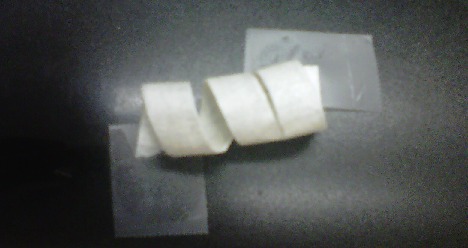OP, I have done the test and my strands don't feel rough to me. I've also never really been bothered by porosity so haven't really tried to change it.
I have no clue as to what else would cause this since I was heat free when I was relaxed and now as a natural. I will wash my hair today and see if my hair sinks or floats.
Anyone else seen or experienced this with their hair strands?
editted: Ok, just saw a YT video and she demonstrated by going down the hair shaft. So, which way is it? Do you judge by going up or down the hair strands?
@
simplyhair Hair porosity isn't necessarily a result of damage or bad hair care. It could just be how your strands are made. So not using heat may not be a factor at all. Some people have hair cuticles that are closed and others are wide open.
Indeed hair porosity can change in damaged hair, so that hair that had low or normal porosity becomes more porous because the cuticle is damaged and so there are holes in the hair making it "hol(e)y" ie more porous.
And your hair cuticle scales lie in the direction away from your scalp toward the ends of your strands. So you need to be sliding your fingers from scalp toward ends. In the image below, the hair is hanging downward so the scalp is toward the top of the image, and the ends are towards the bottom, so you'd have to slide fingers downward.
Another thing you need to realize is coily afro hair when stretched out will not lie flat like a ribbon--also our strands are not perfect cylinders but have a groove along their length
...and like ribbons, when you stretch them open, they open up in a twisted way...so what may feel like roughness may just be the bumpiness of the twisting. I tried to demonstrate what I mean with these images:
Shrunken your hair looks like this:
You stretch it, you have this:
I think the best way to feel the difference between smooth and rough is to run your fingers one way and then run them the opposite way. Going toward your scalp should feel rough and going towards the ends should feel smooth.
Now unless you've got another head of hair to compare with, I don't think it's easy to be able to tell just from stroking your hair if you have low or high porosity. But even if you had another head to compare with, how do you know if it's normal vs low? Or high vs low? I mean what is rough to you might be smooth to me, yanno?
So other tests like putting a clean strand in water and seeing if it floats or sinks...or just paying attention to how long it takes to wet your hair properly, and how long it takes for it to airdry...are other ways to tell.
I believe I have normal porosity but that again may be relative. I don't think my hair takes particularly long to get wet or particularly long to get dry. I also don't think either happens fast. But who determines what's fast or not?
I think porosity should only become a concern if it's affecting you and your hair's state. There are people who are only happy with their hair if it's juice dripping when to me that is wasteful...so if my hair wasn't that wet, I'd be OK with it and would not consider my porosity an issue. To those people, they may think that their hair is constantly in need of moisture when really it isn't and they are the ones tripping. There are people who are just happy if their hair is soft even if it doesn't
look moisturized. Softness to them means internal moisture and it's what they are happy with.
People with low porosity may not get soft hair without baggying or infusing moisture into their hair somehow. They may also need to use an alkaline product to open cuticle to allow moisture in to get soft hair. People with high porosity may find that no matter what they do, their hair feels hard...because it doesn't hold onto moisture so something like Porosity Control may work for them.
Sometimes I think we go overboard with tons of products and coat our hair making it behave in ways that makes us think we have a porosity issue when it's just what we're using that isn't working for us. Like if you use a serum as your "moisturizer" you will clearly appear to have low porosity coz nothing will penetrate that layer to moisturize your hair and wetting it will be a problem too. And if you use a humectant in dry whether, then it will appear as if you have high porosity coz all the moisture you put in your hair will be handed over to that atmosphere with a quickness you will feel as if you can never keep moisture on your hair.





